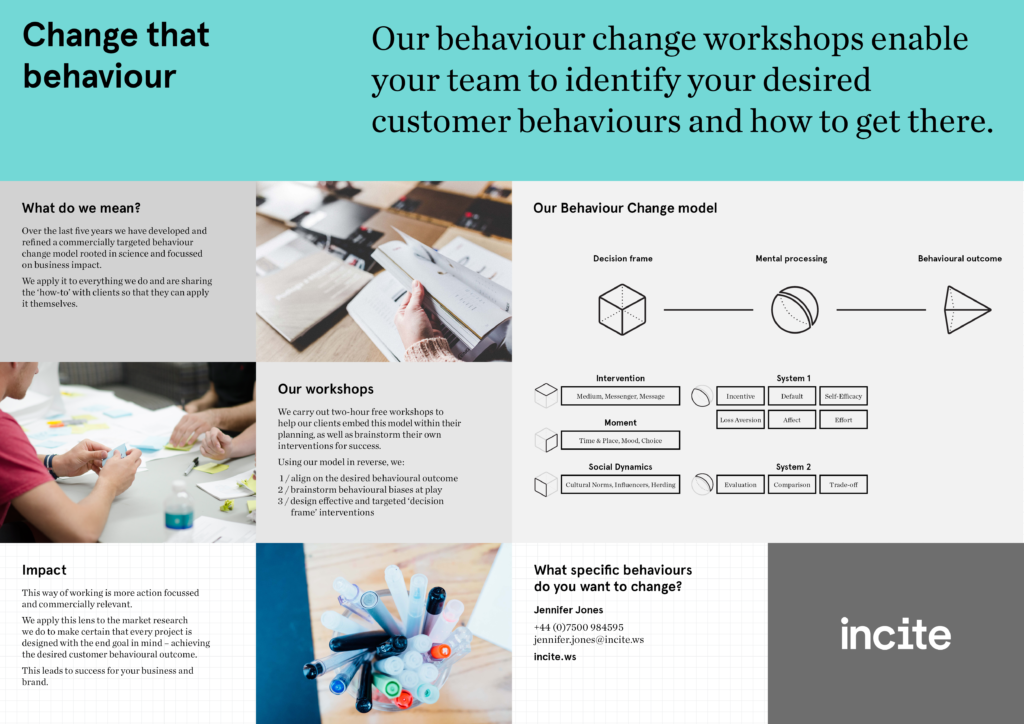An evolving model of behaviour change
We’ve been applying the science of behavioural economics and other academic theory of human behaviour to our work for several years now.
An obvious place to start was the world of healthcare, where changing behaviour – eating more healthily, quitting smoking, adhering to a course of medication – is often an explicit subject of research. As the applications have proved so effective, and as more clients and colleagues have been exposed to them, it’s become something we turn to for the vast majority of our work.
This evolution is unsurprising: the job of marketers is to affect what customers or consumers do. And there’s an increasing realisation that people are creatures of habit, defaulting to repetitive behaviour and deploying rules of thumb to make decisions, usually without the need for conscious thought. Doing something different requires effort on the part of consumer, and effort – even what’s involved in attending to marketing messages – is something we humans will always avoid if we possibly can. Many campaigns aren’t even rejected by consumers: they go unseen, unnoticed and unprocessed.
Our initial model was more of a checklist: a list of the key biases that may be in play when people make choices. This did the important job of making us and our clients more mindful of the accepted behavioural science, and helped rein in our natural tendencies to see the consumer as homo economicus: a rational decision-making machine, assessing hard data and dispassionately assessing all the options.
But our model didn’t fully reflect the acutely context-specific nature of behaviour. And we wanted it to give a more active account of the details of the decision-making process. This means, for example, that talking about the ‘average customer’ on a ‘typical shopping mission’ just doesn’t deliver the granularity required to design a marketing intervention that will work.
And that focus on interventions as an output was another way we needed our model to work harder: helping us fine-tune details of marketing execution that work with people’s natural choice-making mechanisms.
Our behaviour change model

So, our model now has three distinct elements. First the decision frame: putting our marketing intervention in the detailed context of a moment in space and time, with its backdrop of existing social norms and dynamics. Then mental processing: how our brains deploy their System 1 and 2 resources to handle the sum of inputs and determine how we act, and finally the behavioural outcome itself: the action (or sometimes inaction) which ensues.
Having introduced the revised model to clients in organisations as different as healthcare, public transport and charity, we’ve found it delivers a better understanding of how people act as they do, and the knowledge required to plan detailed marketing activities that really work.
If you want to understand why people choose your brand or your competitors’ and build plans to change or reinforce behaviour, let’s talk about how our Behaviour Change model could help you start to do things differently.
Click here:




